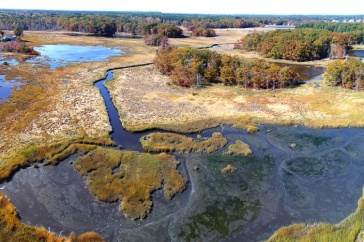When the dinosaurs died off 65 million years ago, they left clues behind, their fossils scattered around the world in bits and pieces and, sometimes, entire skeletons. From the same period, there are few fossilized bees that scientists can use to deduce how the insects lived and died. Working with colleagues in Australia, Sandra Rehan, an assistant professor of biological sciences, has used DNA sequencing of modern species to model how bees evolved near the end of the Cretaceous period. In a study published in October by the Public Library of Science journal, PLoS ONE, Rehan and her colleagues examined four lineages of carpenter bees and found that each indicated a fate similar to that of dinosaur contemporaries: mass extinction.
Today, bees are incredibly diverse. In September, scientists identified the 20,000th distinct species. But about 66 million years ago, there was a “genetic bottleneck” due to die off, Rehan says.
“Up to 90 percent of diversity was lost, and we don’t have the fossils to determin what species went extinct at that time,” she says. “All we have is the living species that we can study now.”
Rehan began charting the genetic makeup of species and how they are related to one another to develop a kind of bee family tree, a practice called molecular phylogenetics. She and co-authors Remko Leys and Michael Schwarz of Flinders University of South Australia used fossilized bees that have been found—most much younger than 66 million years—as a sort of “calibration point,” to understand the pace of evolution that led to modern species. They followed the model backward in time and found that the pattern of extinction held for all four bee groups. “The data told us something major was happening in four different groups of bees at the same time,” Rehan says. “And it happened to be the same time as the dinosaurs went extinct.”
The idea that bees died en masse during this period—a time scientists had already documented as coinciding with the extinction of the flowering plants on which they would have depended—seems intuitive. But, Rehan says, this study provided the first evidence.
Today, bee colonies are struggling. It’s not clear why, though insecticides and pathogens likely play a role. The picture Rehan and her colleagues paint from tens of millions of years ago may not provide any clarity about the cause. But, the authors write, it might shed light on how bees could evolve today to cope with widespread species collapse.
“Understanding extinctions and the effects of declines in the past can help us understand the global crisis in pollinators today, ” Rehan says.
—Chelsea Conaboy ’04
Originally published in UNH Magazine—Winter 2014 Issue



















































